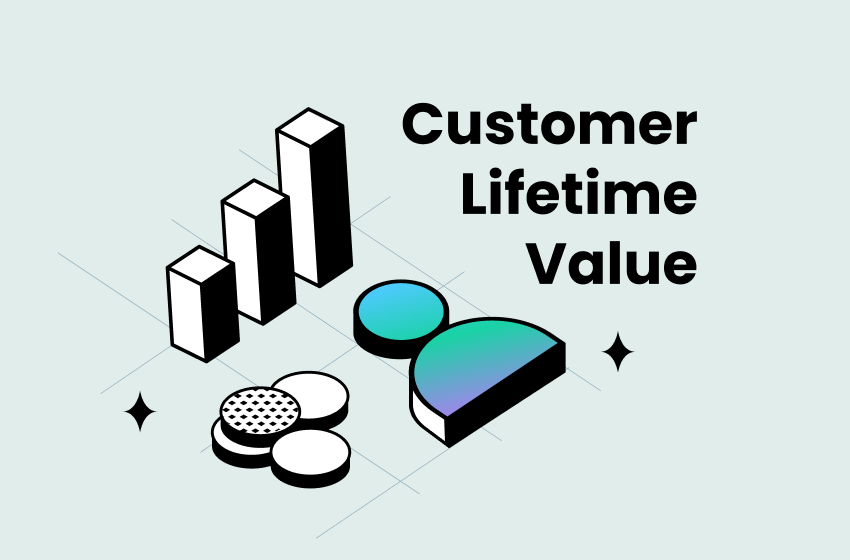How To Calculate Shopify LTV (Customer Lifetime Value)?

Understanding Shopify LTV (Customer Lifetime Value) is essential for store owners aiming to maximize profitability and long-term growth. Shopify LTV measures the total revenue a customer generates throughout their relationship with your business.
By accurately calculating and optimizing this metric, you can make data-driven decisions to allocate your marketing budget effectively, enhance customer retention, and boost overall sales.
Why Is Calculating Shopify Customer Lifetime Value Important?
Understanding Shopify LTV is essential for several reasons:
- Optimizing Marketing Spend: Knowing how much a customer is worth allows you to invest wisely in customer acquisition. If your LTV is significantly higher than your customer acquisition cost (CAC), your business is on a sustainable path.
- Boosting Customer Retention: Identifying high-value customers enables you to create strategies that improve their experience, leading to repeat purchases and long-term loyalty.
- Increasing Profit Margins: By focusing on customers who generate more revenue over time, you can optimize your pricing, upsell strategies, and product offerings to maximize revenue.
- Enhancing Business Forecasting: A well-calculated LTV provides better insight into business growth and helps in long-term financial planning.
How to Calculate Shopify LTV?
There are two primary ways to calculate Shopify Customer Lifetime Value: manually or by using tools like the TrueProfit app.
1. Calculate Shopify LTV Using Shopify Dashboard
While Shopify doesn’t provide a direct LTV metric, you can still calculate it using key data available in your Shopify Analytics dashboard. Here’s a step-by-step guide:
Step 1: Find Your Average Order Value (AOV)
The Average Order Value (AOV) tells you how much revenue you earn per order.
Here's how you can find AOV in Shopify:
- Log in to your Shopify Admin.
- Navigate to Analytics > Reports.
- Under Sales Reports, find Average Order Value (AOV).
- Note this number, as it will be used in the LTV formula.
For example: If your AOV is $50, it means that, on average, each order generates $50 in revenue.
Step 2: Determine Purchase Frequency (PF)
The Purchase Frequency (PF) tells you how often an average customer makes a purchase within a given timeframe.
You can calculate purchase frequency in Shopify by:
- Go to Analytics > Customer Reports.
- Open Customers Over Time to see how often customers return
- Use this formula: PF = Total Orders ÷ Total Unique Customers
For example: If you had 3,000 orders from 1,000 unique customers, your PF would be: PF = 3,000 ÷ 1,000 = 3 purchases per customer
Step 3: Calculate Customer Lifespan (CL)
Customer Lifespan (CL) represents the average time a customer continues to buy from your store.
How to estimate customer lifespan in Shopify:
- Check historical data on repeat customers.
- If unsure, use an industry benchmark (1–3 years for eCommerce).
For instance: If customers stay with your brand for 2 years, your CL = 2.
Step 4: Calculate Shopify LTV
Now, apply the Shopify LTV formula:
LTV = (Average Order Value) x (Average Purchase Frequency) x (Average Customer Lifespan)
Let’s take a look at this example:
- AOV = $50
- PF = 3 purchases per year
- CL = 2 years
- LTV = $50 × 3 × 2 = $300
This means, on average, each customer is worth $300 over their lifetime.
If you think doing this is too complicated, there is a smarter way to calculate your Shopify LTV, which is using a Shopify profit analysis app like TrueProfit.
2. Using a Tool Like TrueProfit for Shopify LTV Calculation
If manually calculating LTV feels overwhelming, Shopify profit calculation apps like TrueProfit can automate this process.
TrueProfit seamlessly syncs data from your Shopify stores and any other ad platforms, shipping platforms,... to analyze real-time data and provides an all-in-one dashboard tracking key metrics like total customers, repurchase rates, CAC, and Customer Lifetime Value, all in real-time.
Using TrueProfit for Shopify LTV calculation is hands down better than the traditional manual method because:
- You get access to real-time reports rather than outdated data in spreadsheets (or your mental math)
- You can enhance your customer acquisition and retention strategies by tracking LTV:CAC ratio.
- Forecast future revenue growth to smartly allocate your marketing budget.
How to Increase Shopify Lifetime Value?
After your calculations of Shopify LTV, you may have yielded some promising results. However, it is always a good idea to think of improvement! Below are some tips to get the most of every customer and boost your Shopify lifetime value.
Tip #1. Run cross-sell and upsell campaigns
Upselling and cross-selling are effective methods for raising Shopify LTV since they encourage customers to buy more products or upgrade to higher-value options.
These methods are used to market to existing customers rather than the new ones. It is because selling to a current customer has a 60% to 70% likelihood of success compared to a 5% to 20% likelihood of selling to a new one, according to Marketing Metrics.
Online businesses can provide personalized product recommendations and combine relevant products together, encouraging your shoppers to purchase more, increasing your AOV and customer lifetime value.
For instance, Beardbrand has a campaign where their customers can add products to their cart for special bundle pricing.
Tip #2. Implement loyalty campaigns
Loyalty programs, which incentivize customers to make repeat purchases and connect more closely with the business over time, are another powerful method for raising Shopify LTV.
More than 84% of customers say they would commit to a brand that provides a loyalty program. In fact, customer loyalty programs are used by more than 90% of businesses. That proves it is one of the most effective strategies to boost revenue and retain customers.
Therefore, you should build a loyalty program to communicate to your most loyal customers that you appreciate them by providing special rewards for their repeat purchases. You can offer several incentives in your loyalty program, such as:
- Points
- Gift cards
- Exclusive discounts
- Cashback
- Early access
- Free swag
For example, the North Face has a loyalty program in place that offers exclusive gear, birthday gifts, points on each purchase and rewards for their members.


The North Face uses this program to learn about their customers' behaviors and foster the relationship with them by engaging them with the brand’s unique benefits.
Making them feel unique, giving attractive incentives and points systems, and cultivating customer loyalty will enhance the likelihood that they will continue to buy from you over time. That translates to a higher LTV Shopify merchants all wish to have!
Tip #3. Optimize customer experience
Excellent customer service can help you create strong relationships with your customers and gain their loyalty. The XM Institute reports that 95% of customers who rate a business' customer service as "very good" are inclined to recommend the business to their friends or family.
That leads to more potential customers, more sales, and less acquisition costs for your business. In fact, customer experience leaders earn revenue faster, lower costs, and charge more for products.
Some simple strategies to improve customer experience include:
- Open to customer feedback which can be used to improve the experience later.
- Collect and use Zero-Party data to customize experiences and provide personalized recommendations and offers.
- Offering quick and easy assistance
- Assessing performance and adapting to see if your customer experience is good or needs any improvement.
Customer experience needs ongoing nurturing and care. Yet, by implementing the right strategies, you can ensure a good experience for your customers. That will eventually result in increased sales and Shopify LTV.
Tip #4. Offer a subscription service
A subscription is a good method to raise the time a customer spends with your business if you sell items that can be sold through a subscription model (e.g., cosmetic products, food or beverage, etc.).
Nowadays, customers value convenience, and according to a McKinsey study, 15% of online customers have joined up for one or more subscription services to receive recurrent products. In fact, the subscription eCommerce business is quickly expanding, with a projected value of $478.2 billion by 2025.
That’s why you may need to create a subscription service to tailor to your customers’ needs. In addition, you will have a consistent monthly cash stream, which means guaranteed revenue if you provide annual or longer-term subscription options.
Take a look at the subscription service of Family Dinner. There are many options that provide their customers with healthy and fresh ingredients for your family’s meals.


The products are delivered weekly to your home or office on Saturday, with the payment required to be made in advance on Monday.
Ultimately, a subscription box assists in converting one-time buyers into recurring customers. Besides, it can ensure greater cash on hand, and lowers customer acquisition expenditures.
Tip #5. Use retargeting ads
Retargeting is another useful strategy for raising Shopify LTV since it allows you to target customers who have previously expressed interest in your products or services with the goal of increasing their purchase frequency
You should display tailored adverts to customers who have visited their website or added products to their shopping carts. By doing that, you can encourage customers to complete their purchases and engage with their brands longer.
Retargeting advertising is frequently less expensive than ads aimed at new potential customers. Therefore, this can help you save money on acquisitions over time. Remember to target your remarketing campaigns to places where you can deliver.
Final Thoughts
Improve LTV by enhancing customer retention, offering loyalty programs, personalizing marketing, and increasing AOV.
Shopify LTV is a crucial metric for long-term success. Whether you choose manual calculation or automated tools like TrueProfit, understanding LTV helps you optimize marketing, improve retention, and boost revenue.
By implementing the right strategies, you can increase your customer lifetime value and scale your business sustainably.
Irene Le is the Content Manager at TrueProfit, specializing in crafting insightful, data-driven content to help eCommerce merchants scale profitably. With over 5 years of experience in content creation and growth strategy for the eCommerce industry, she is dedicated to producing high-value, actionable content that empowers merchants to make informed financial decisions.




 Shopify profits
Shopify profits

